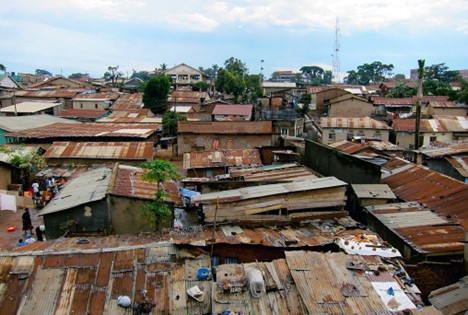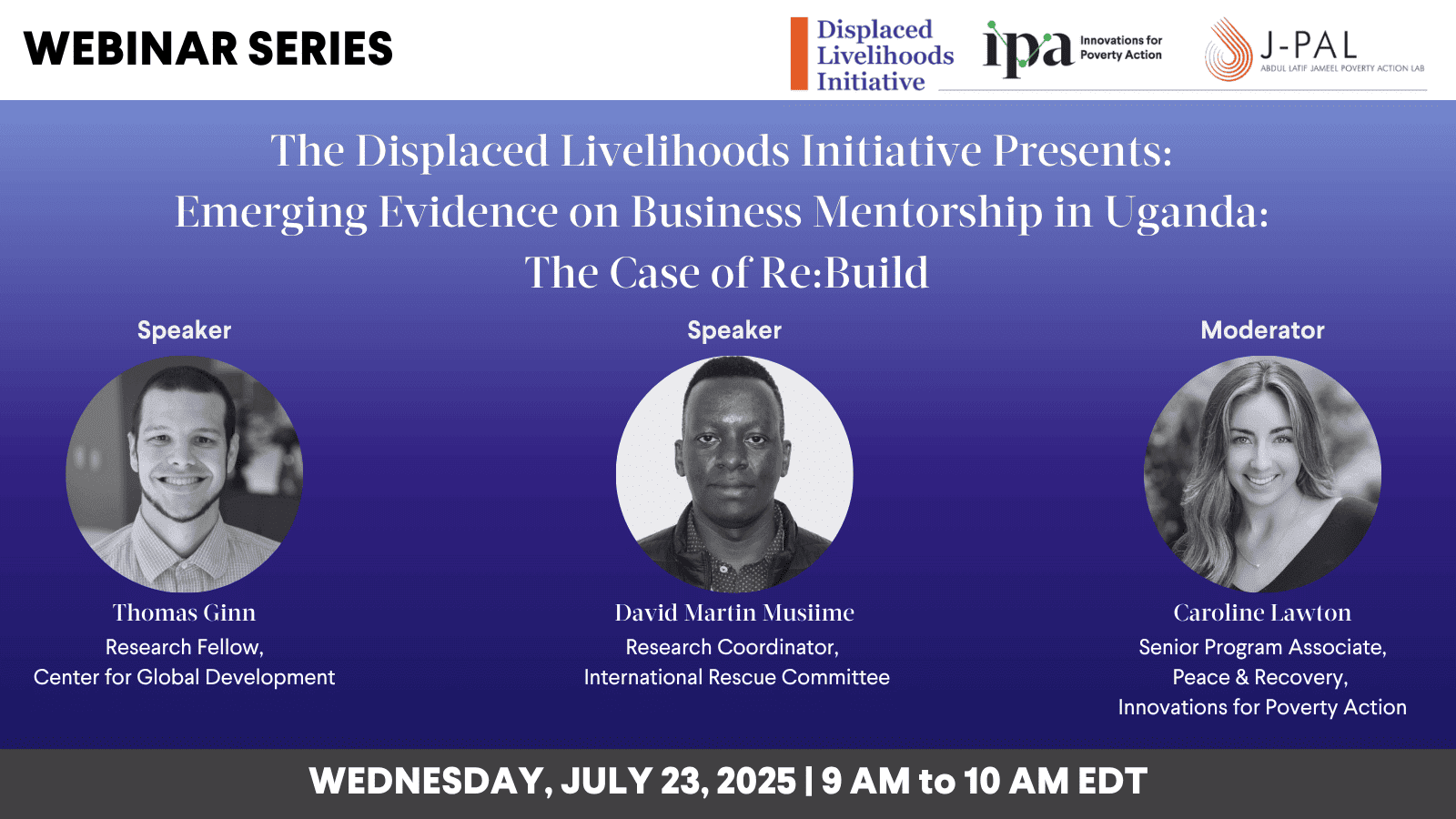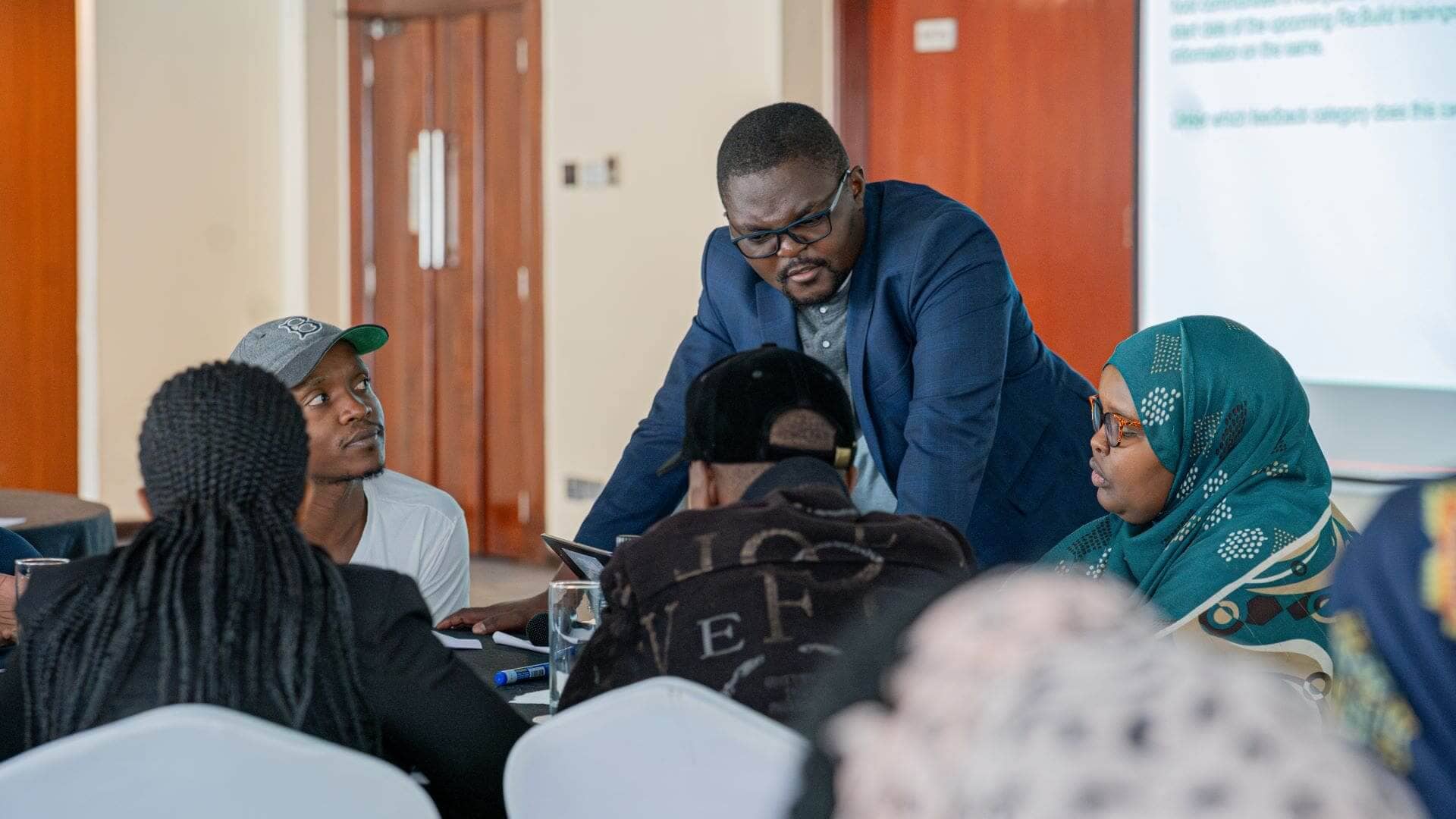Forced Migration and the Global Housing Crisis
Forced Migration and the Global Housing Crisis
Forced Migration and the Global Housing Crisis
By Anne Marie Schryer and Irene Shiundu
Today, 2.8 billion people worldwide face some form of housing inadequacy and 1.1 billion still live in slums and informal settlements. Forced displacement due to war, conflict, and climate shocks exacerbates existing urban housing shortages and presents a complex challenge that requires both immediate humanitarian assistance and long-term development strategies.
At the same time, more than 123 million people are forcibly displaced worldwide—75% of whom reside in low- and middle-income countries (LMICs). This includes approximately 43.4 million refugees under UNHCR's mandate and 70 million people who are displaced within their own countries.
Approximately 4.8 out of 8 billion people globally live in towns or cities, representing 58% of the world's population. But by 2035, the urban population is projected to rise to 68%. The World Bank’s updated Groundswell report further estimates that by 2050, over 200 million people will be forced to migrate internally due to climate change, most of whom will move to already densely populated urban areas. Sustainable, and inclusive solutions to ensure that housing is accessible to all, including urban refugees and internally displaced persons (IDPs) are urgently needed.
Forced Migration and Urban Housing Challenges
A joint CGD-IRC paper on refugees in Nairobi and Kampala shed light on the additional obstacles that urban refugees and IDPs encounter in accessing safe and affordable housing. These challenges arise from a combination of factors, including a lack of documentation, the high cost of urban housing, and prevalent discrimination and xenophobia. As a result, many refugees and displaced persons are compelled to reside in overcrowded, substandard, or informal housing arrangements that lack basic amenities such as clean water, sanitation facilities, and electricity. They are also at risk of eviction, as landlords may exploit their legal vulnerability by demanding exorbitant rents or imposing unfair rental conditions.
At the same time, large and rapid influxes of displaced populations into cities have, in some contexts such as Turkey and Jordan, led to increases in rental prices for both those that have been displaced and for host communities.
Forced Migration and Urban Planning
Traditionally, approaches to forced displacement have focused on immediate humanitarian assistance and protection, often overlooking long-term development, economic opportunities, and the needs of host communities. A critical shift in mindset is needed—moving away from emergency responses and towards long-term sustainable interventions that recognize displaced people as permanent-and often urban-residents rather than temporary humanitarian caseloads.
Steps in that direction have already taken place, dating as far back as the UN Refugee Agency (UNHCR) 2009 policy on urban refugees. At the World Urban Forum (WUF) in November 2024, Raouf Mazou, from the UN Refugee Agency (UNHCR), highlighted a significant shift in the organization’s approach—moving away from short-term humanitarian aid and focusing instead on long-term development solutions, including by working to integrate IDPs into local and national development plans, and by promoting the integration of refugees into existing social services. Also, at WUF, keynote speaker Sultan Barakat from Hamad Bin Khalifa University emphasized :
“Refugees must be enabled to create a sense of belonging in their host communities, as home is critical to one’s identity.”
Given the increasing number of displaced persons and the prolonged nature of displacement, sustainable housing solutions must be integrated into urban planning frameworks.
The Need for Policy and Development-Oriented Solutions
A major issue in addressing forced migration and urban housing is the chronic underfunding of Housing, Land and Property rights programs. Many experts at WUF emphasized the need to move HLP discussions beyond the humanitarian sector and into development spaces. This shift would facilitate the creation of policies and frameworks that ensure displaced populations have legal access to land and tenure security.
UN-Habitat’s recent publications, such as Housing, Land, and Property Solutions to Resolve and Prevent Displacement and Durable Housing, Land, and Property Solutions for Customary Displacement Contexts, provide essential guidance on how to apply HLP policies in urban displacement settings. This guidance includes the need for area-based multisectoral assessments to understand the complex dimensions of displacement, alongside mapping relevant policies and legal frameworks to facilitate HLP solutions. Key recommendations include strengthening climate-displacement linkages, promoting gender-responsive land ownership, ensuring due diligence in land agreements, fostering alternative dispute resolution mechanisms, and deploying conflict-sensitive land tools—particularly in dense urban areas and high-risk zones—to prevent violence and support durable solutions. These documents emphasize that well-managed urban migration can lead to economic and social benefits for the entire city. Conversely, poor management can result in gaps in essential services such as housing, education, healthcare, and employment opportunities.
Meanwhile, Robert Piper, a key presenter at WUF, introduced the UN Habitat Framework for Urban Solutions that should be incorporated into programming for displaced populations. Sustainable, scalable, and transformative interventions are necessary to create a lasting impact. As cities increasingly become primary destinations for displaced persons, urban migration must be treated as a development challenge rather than solely a humanitarian issue. Local governments, urban planners, and international organizations need to collaborate to integrate forcibly displaced populations into broader urban development strategies.
Towards a Sustainable and Inclusive Urban Future
Cities have become both sanctuaries and strained hosts for displaced populations. To address these challenges, resilient urban systems that can adapt to the needs of all residents are critical. Local governments play a crucial role in integrating forcibly displaced populations into urban planning and development strategies.
The global housing crisis requires a multi-sectoral and collaborative approach to managing it and providing protection for displaced populations. Policymakers, urban planners, human rights and advocacy practitioners and humanitarian actors must work together to prioritize housing as a human right and create long-term, sustainable solutions for displaced populations.
The International Rescue Committee (IRC) through the Re:BUilLD program has over the years maintained a close collaboration with the Nairobi City County Government (NCCG) and Kampala Capital City Authority (KCCA). In its fifth year of implementation, we see a vital opportunity for cities to take direct responsibility for scaling and sustaining refugee inclusion and integration in their governance, social systems, and structures. To effectively address the growing demands and improve service delivery for refugees, it is crucial for policymakers, programmers, donors, private sector representatives, and city planners to collaborate on innovative and practical solutions to tackle the housing crisis that urban refugees are facing.
Below are a few practical and forward-thinking approaches to incorporating refugee housing strategies:
Policy Alignment: Advocate for national and city-level housing policies that explicitly include refugees as a vulnerable population with specific housing needs. This could involve amending existing housing Acts, streamlining regulations or developing supplementary guidelines.
Joint Needs Assessments: Conduct a review of existing public housing and integrated housing needs assessments that consider both national and refugee populations to get a comprehensive understanding of the scale and nature of the demand emphasizing that providing decent housing for refugees can contribute to their economic integration
Resource Allocation: Explore options for allocating a portion of national housing funds or international aid specifically for refugee housing solutions within urban areas, ensuring it doesn't solely compete with resources for nationals but rather expands the overall housing pool.
Incremental Housing and Slum Upgrading with Refugee Inclusion: Participatory planning ensures prioritization of essential services (water, sanitation, electricity) to informal settlements where refugees reside to mitigate socio-economic and spatial disparities and benefit the entire community as well as co-create solutions that are culturally appropriate and meet the needs of all residents,
Secure Tenure and Property Rights: Explore mechanisms for providing secure tenure or other forms of occupancy rights to refugee households within informal settlements as part of broader upgrading efforts.
Adaptive Reuse: Identify and rehabilitate underutilized or abandoned public or private buildings into affordable housing units for both nationals and refugees. This can be a cost-effective way to increase housing stock.
As cities increasingly become primary destinations for displaced persons, urban migration must be treated as a development challenge rather than solely a humanitarian issue. By treating forced displacement as a development challenge, cities can harness the potential of displaced individuals, promote economic growth, and build more inclusive and resilient communities for the future.


